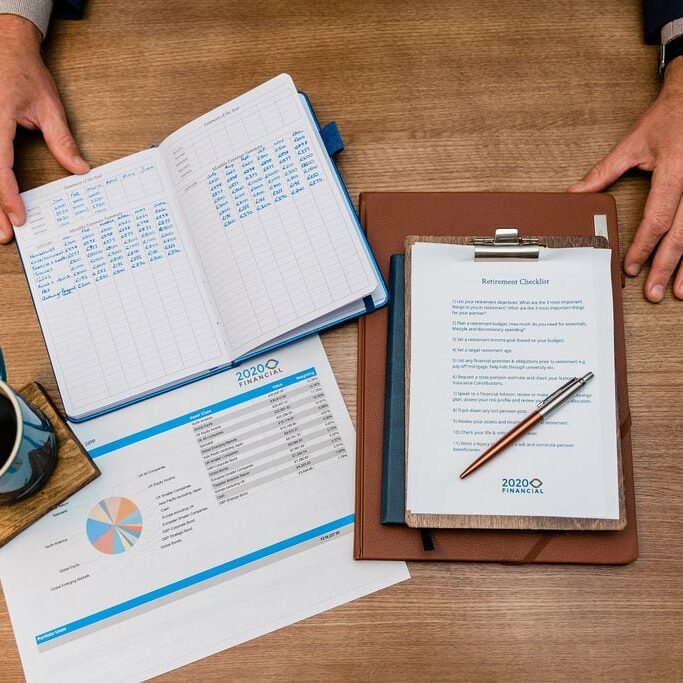
One Of The Best Pieces Of Retirement Advice You’ll Receive may also be one of the simplest. Setting A Retirement Date is not hard, so why are so many people failing to do it?
Research by Standard Life[1] shows that most over-45s are not making plans to match their hopes for the future. Although 86% of people aged 45 or over are already dreaming about their retirement, only 8% of them have recently checked the retirement date on their pension to make sure they are still in line with their plans.
Putting a date on your retirement plans may seem like a simple piece of advice but it is essential for keeping your retirement plans on track. We explore the reasons below.
The research showed that over half (56%) of people surveyed didn’t have a clear idea about when they want to retire, and only one in ten (10%) have worked out how much income they’ll need when they decide to stop working. The study also reveals it doesn’t get much clearer as you go up the generations: less than a fifth (17%) of those aged between 55 and 64 have recently checked to see if the retirement date on their pension policy is still fitting in with their plans.
Setting your retirement date matters
Some people will have set their retirement date when they were in their 20s or 30s, and a great deal will have changed since then, including their State Pension age and perhaps their career plans. Setting your retirement date may seem like a ‘finger-in-the-air’ guess when you’re younger, but the date that you set for retirement on a pension plan matters since it will often dictate how your money is being invested and the communications you receive as you get nearer to that date, not to mention your own saving behaviours.
Why you need to keep your retirement plans up to date.
Get the Right support, right time
If the date you plan to retire changes or you simply want to take some of your pension without stopping working, it’s important to tell your pension company. Otherwise, you may not receive information and support about your pending retirement at the most helpful times, as they’ll be basing this on your out-of-date plans.
Balancing investment risk
Some investment options will start to move your pension savings into lower risk investments as you get closer to retirement, known as de-risking your investment. If you don’t have the right retirement date on your plan, you could be moving into these investments at the wrong time. For example, if you move into them too early, you could potentially miss out on investment returns that could increase the value of your pension savings. But if you move too late, you could be exposing your life savings to unnecessary risk.
Deciding Investment pot size
The size of the pension pot you need to build up to maintain your lifestyle in retirement will depend on when you actually plan to retire. For instance, you’ll need a lot more money in your pension pot if you plan to retire at 55 compared to retiring at 70. If you have a goal amount for your pension pot and you have set a date for when you want to retire, it’s easy to see if you’re on track to save your goal by the date you’ve set.
Working out what income you can afford
If you’re planning to buy an annuity at retirement, which will guarantee you an income for the rest of your life, the amount of income you’ll get will depend on the size of your pot (and annuity rates at that time), your age at retirement, your medical history and your lifestyle factors. If you prefer to use your pension savings more flexibly, you can keep your money invested, and take it as and when you need. You’re then responsible for making sure your life savings last as long as you need them to.
Reviewing your retirement date regularly as you get older makes real sense, and most modern pension plans enable you to change and update this date whenever you choose. It needn’t be the same as your State Pension age – you might want to work longer or retire earlier – but you’ll normally have to wait until you’re 55. Some people who plan to slow down or stop work earlier are using money from their private pension savings to bridge the gap until they can start claiming State Pension. All you need to do is inform your pension company of your plans, even if they change again in the future.
Source data:
[1] The research was carried out online for Standard Life by Opinium. The sample size was 2,001 adults. The figures have been weighted and are representative of all GB adults (aged 18+). Fieldwork was undertaken in November 2017.
IMPORTANT NOTE:
Pensions are not normally accessible until age 55. Your pension income could also be affected by interest rates at the time you take your benefits. The tax implications of pension withdrawals will be based on your individual circumstances, tax legislation and regulation, which are subject to change in the future.
Do you have a clear idea of how to achieve your aims?
Whatever you want out of retirement, we could help get you there. Whether your retirement’s a long way off or just around the corner, having a clear idea of how to achieve your aims is important.
To review your situation and consider the ways we can to help you make the most of your retirement income, please contact us on 02380 981161 or contact us belowTALK TO A PENSION SPECIALIST
We look forward to hearing from you.



